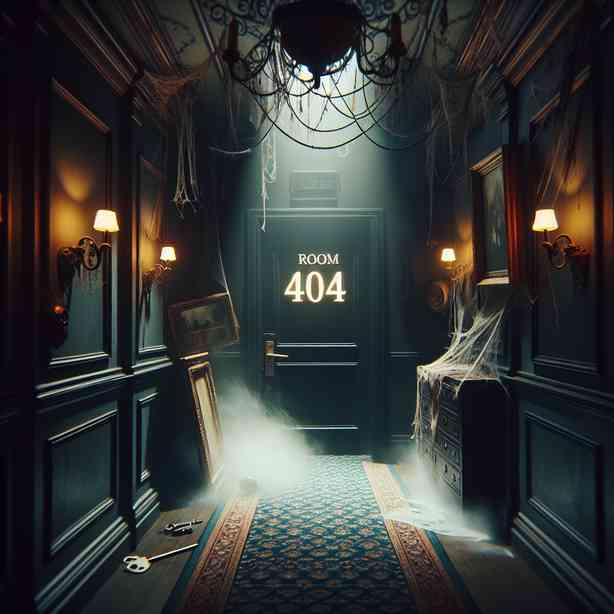
Room 404 evokes a sense of unease for many, serving as an intriguing subject that may seem trivial at first glance but encompasses deeper psychological and cultural associations. In a world where the mundane often intertwines with our fears and beliefs, the number 404 can provoke a unique blend of trepidation and curiosity. This phenomenon is not just a matter of superstition; it often stems from a combination of cultural references, historical contexts, and personal experiences.
The number 4 is frequently related to misfortune in various cultures, predominantly in East Asian countries. Here, the pronunciation of “four” sounds remarkably similar to the word for “death.” This phonetic association creates an inherent discomfort, leading to an aversion to the number in everyday life. Hospitals and hotels sometimes skip the 4th floor entirely or replace it with another designation, illustrating how deeply rooted these fears are in social consciousness.
Room 404, therefore, inherits this stigma. When one encounters such a room number, the ominous connotation can evoke feelings of anxiety, whether consciously or unconsciously. The human mind is remarkably adept at making connections, and the idea of walking into a room imbued with the essence of fear can be unsettling. For individuals already predisposed to anxiety or superstition, staying in Room 404 can amplify those feelings, creating an experience that goes well beyond a mere room number.
Furthermore, the impact of media and pop culture cannot be understated in this context. Films and literature often explore themes centered around haunting, mysteries, or supernatural phenomena, with specific numbers frequently being a focal point of such narratives. Room 404 might become synonymous with haunted spaces, similar to the infamous Room 237 from “The Shining” or other infamous locations in horror genres. This cultural representation reinforces the idea that certain numbers or rooms hold significant meaning and can shape our expectations and experiences.
Another factor contributing to the unease associated with Room 404 is the notion of isolation and confinement. In modern architecture, the design and layout of spaces can significantly influence one’s emotional state. A room at the end of a dimly lit corridor, with minimal foot traffic, can feel more isolated and, thus, more intimidating. The confluence of a disquieting number and an isolated location creates a perfect storm for an unsettling atmosphere.
In contrast, certain spaces evoke comfort and safety, largely stemming from their surroundings and the associations we carry with them. Room 404 may strip away those feelings of security, leaving one to dwell on possible negative connotations. The ambiance plays an essential role, making a seemingly ordinary room feel like a portal to unknown, and often sinister, possibilities.
Even though people may rationally dismiss the notion of a “cursed” room, the unconscious mind often works differently. The feeling of being watched or an overwhelming sense of dread can stem from merely standing in a space that we, as a society, have collectively decided holds various, mostly negative, meanings. These feelings can become amplified when one is alone, further solidifying the omnipresent dread associated with Room 404.
Moreover, the thrill of fear often tantalizes our imaginations. People seek out haunted houses or ghost tours precisely because of the thrill associated with discomforting encounters. By entering Room 404, individuals may unwittingly engage in a psychological game, challenging their fears while also surrendering to an atmosphere steeped in apprehension. The mind also seeks to find patterns; thus, if one has heard or read stories linking Room 404 to bad luck or sinister happenings, their imagination can run wild, culminating in an adrenaline-pumping experience of unease.
The phenomenon of Room 404 also highlights the broader conversation surrounding the influence of numbers in our lives. Many cultures have superstitions tied to specific numbers, further informed by folklore and religious beliefs. The Fibonacci sequence, for example, is revered in mathematics and nature, while various cultures celebrate or demonize numbers based on unique beliefs. The number 404 serves as an intersection of these understandings, merging the psychological, cultural, and emotional landscapes that govern human behavior.
In a broader sense, room numbers are often seen as benign classifications, but the case of Room 404 suggests otherwise, proving how intricately connected we are to our surroundings and the latent meanings imbued in even the simplest aspects of our lives. As we navigate this intricate web of experiences, fears, and societal beliefs, it is essential to acknowledge how our environment shapes our perceptions. Room 404 acts as a mirror reflecting our collective anxieties, ultimately reminding us of the power that culture and psychology hold over our everyday experiences.
In conclusion, the ominous feeling associated with Room 404 is not just a matter of superstition, but rather a convergence of cultural beliefs, psychological responses, and environmental factors. The number four’s negative connotations, heightened by isolation and the influence of media, amalgamate to form an almost mythical tale surrounding a simple room number. Understanding these associations encourages a more profound exploration of the human psyche, revealing the powerful role that numbers and our surroundings play in shaping fear, curiosity, and ultimately, our experiences. Room 404 becomes much more than an ordinary designation; it transforms into a representative of our deepest fears, illustrating why some spaces become loaded with ominous energy, even when they seem unassuming at first glance. Thus, confronting Room 404 can serve as an opportunity to reflect on how we navigate fear in our everyday life, inviting a more in-depth examination of our relationships with places, numbers, and the stories we create around them.


